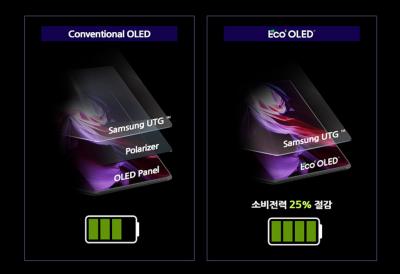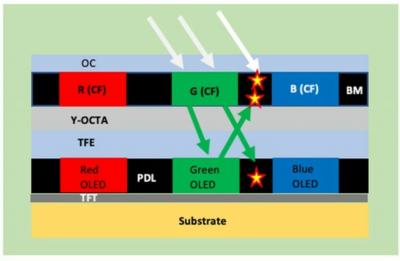Samsung Display announced its latest OLED panel, the Eco²OLED, which increase light output by 33% compared to SDC's previous OLED panels. The increase light translates into a power consumption reduction of up to 25%.

For the Eco²OLED panel, Samsung finally managed to commercialize a polarizer-free OLED, after many years of R&D. The first phone to adopt this display will be Samsung's upcoming Galaxy Fold 3. Interestingly Samsung says that the new design also enabled it to incorporate a high-quality under-the-display camera as more light is entered through the OLED.
Samsung did not disclose any details on the new Eco²OLED technology, beyond the sketch you see above. The polarizer layer eliminates reflections in an OLED panel - but it adds about 50-100 micron in thickness, and it also blocks some of the light which reduces the brightness. This is why companies aim to remove the polarizer - to decrease the thickness (especially important for foldable panels) and improve the power consumption.
Samsung's technology, as was disclosed by DSCC and UBI a while back, replaces the polarizer layers with color filters. To achieve that engineering feat, Samsung and its partners had to develop three different technologies - a black Pixel Definition Layer (PDL), a new color filter design and a new black matrix. You can see how these layers are used in the image above. The main idea is that each sub-pixel in the display (red, green or blue) are separated from each other and so do not interfere one with the other.
Samsung may be the first OLED producer to commercialize this technology, but it is not the only one developing it. BOE is developing its own technology which it refers to as COE (Color filter On Encapsulation) while Tianma's technology is called CFOT.


